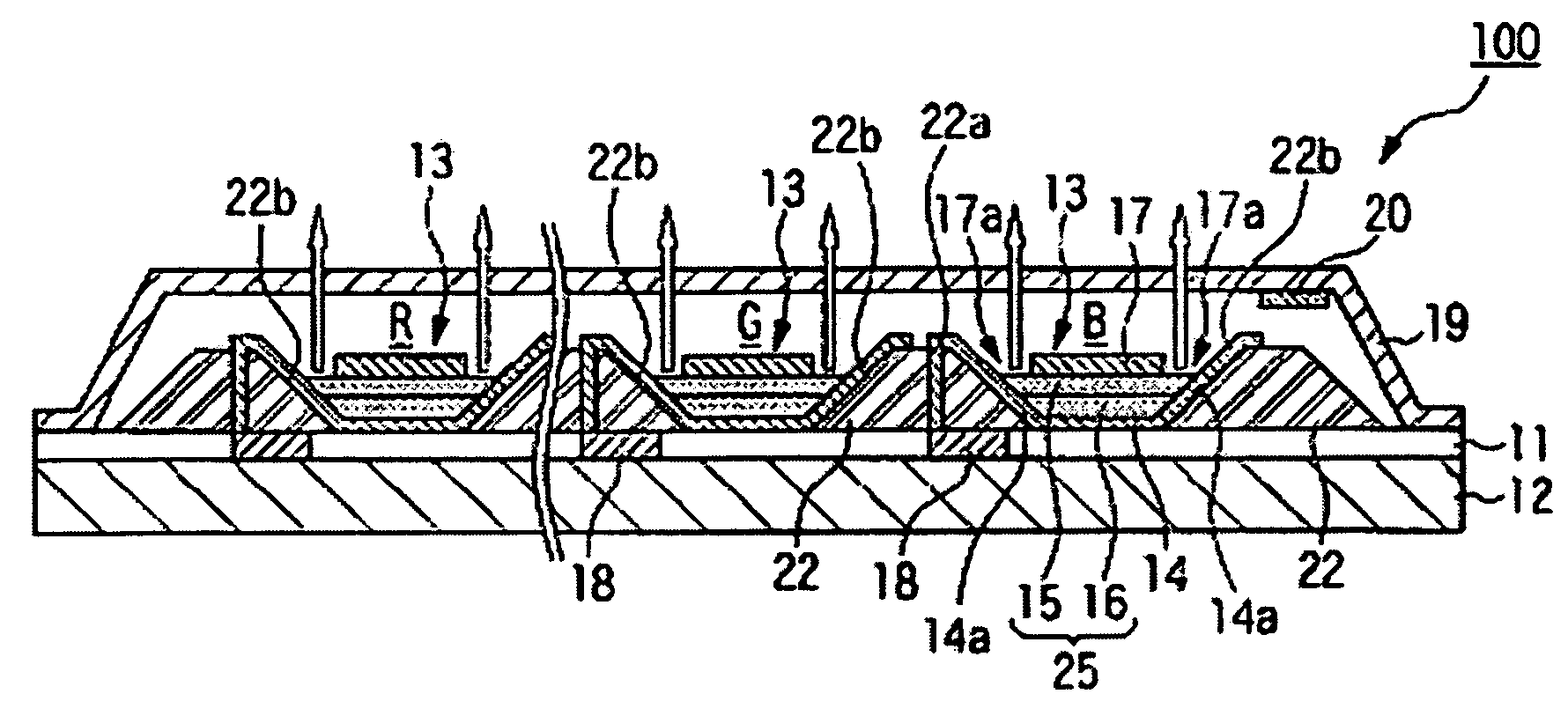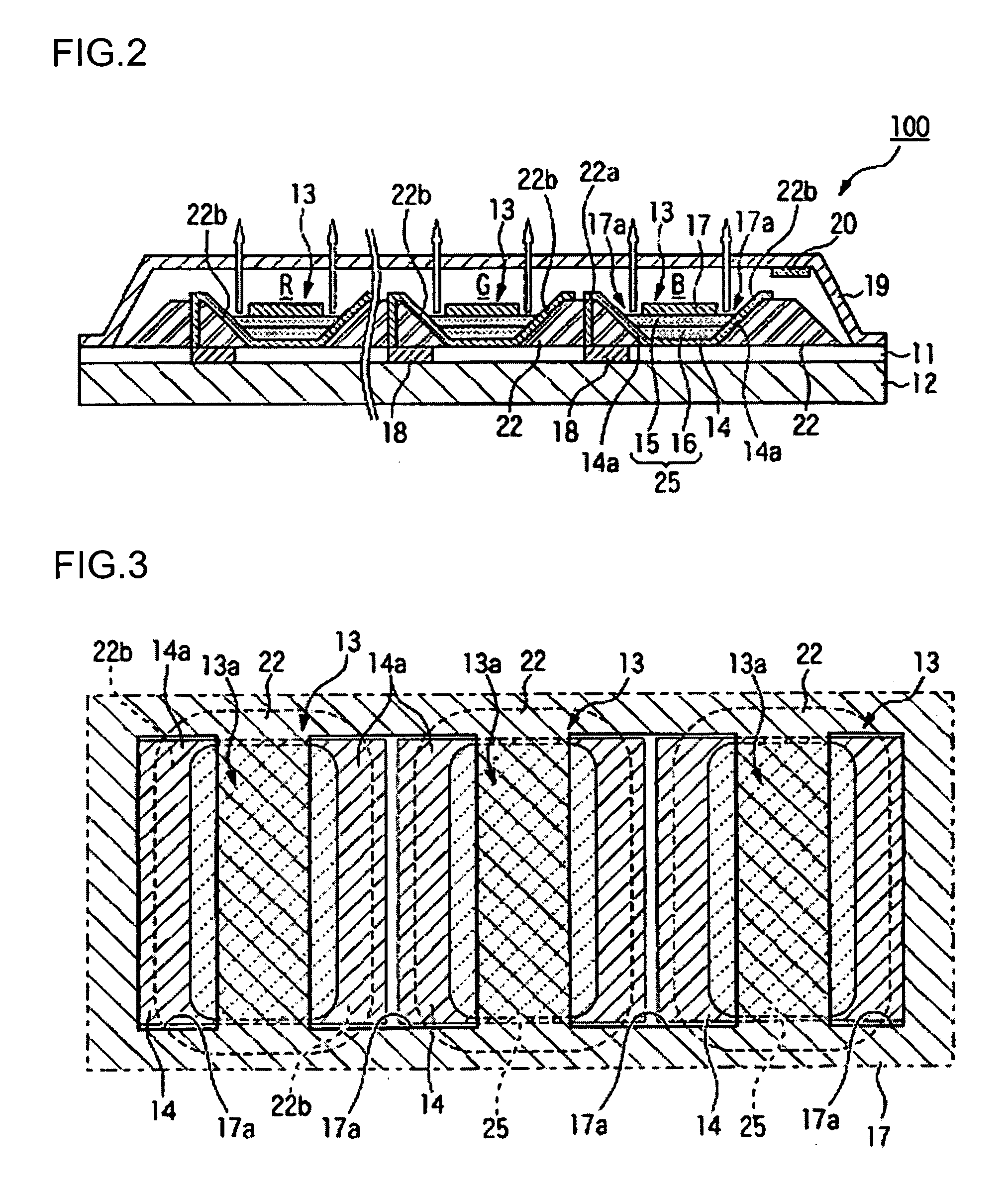Light-emitting device, manufacturing method thereof, and electronic apparatus
a technology of light-emitting devices and manufacturing methods, which is applied in the direction of identification means, instruments, discharge tubes, etc., can solve the problems of reducing light-emitting efficiency, affecting the brightness of light-emitting elements, and not obtaining sufficient transmittance, etc., and achieves high reliability, high brightness, and high brightness.
- Summary
- Abstract
- Description
- Claims
- Application Information
AI Technical Summary
Benefits of technology
Problems solved by technology
Method used
Image
Examples
first embodiment
[0087] Hereinafter, a light-emitting device, a manufacturing method thereof, and an electronic apparatus according to the present invention will be described with reference to the drawings.
[0088] Moreover, the embodiments described below are just an example of the present invention, and is not intended to limit the present invention. The present invention can be arbitrarily modified within the technical scope of the present invention. Further, in the respective drawings shown below, the respective layers or members are shown in a recognizable size in the drawings, and thus the respective layers or members are shown in reduced scales different from each other.
[0089]FIG. 1 is an overall plan view of the construction of an organic electroluminescent (organic EL) device according to an embodiment of a light-emitting device of the present invention, FIG. 2 is a partial cross-sectional view of the organic EL device, and FIG. 3 is a plan view of the construction of a plurality of light-e...
second embodiment
[0115] Next, a second embodiment of the present invention will be described with reference to FIG. 4. FIG. 4 is a partial cross-sectional view showing the construction of an organic EL device 110 of the present embodiment, and corresponds to FIG. 2 in the organic EL device 100 of the first embodiment. In FIG. 4, the sealing substrate is not shown, but the organic EL device 110 of the present embodiment has the same elements as those of the organic EL device 100 described above, except that inside the bank 22 dividing the respective light-emitting elements, a sub-bank (inner partition) 32 is provided to additionally divide the corresponding region. Therefore, in the following description and FIG. 4, the same elements as those of the first embodiment are represented by the same reference numerals, and the descriptions on the same elements will be omitted.
[0116] The organic EL device 110 shown in FIG. 4 comprises a plurality oflight-emitting elements 53. The respective light-emitting ...
third embodiment
[0119] Next, a third embodiment of the present invention will be described with reference to FIG. 5. FIG. 5 is a partial cross-sectional view showing the construction of an organic EL device 120 of the present embodiment and corresponds to FIG. 2 in the organic EL device 100 of the first embodiment.
[0120] Moreover, in FIG. 5, the sealing substrate is omitted. Further, in the present embodiment, different elements from those of the embodiments described above will be described. In addition, the same elements as those of the embodiments described above are represented by the same reference numerals, and the description thereon will be omitted.
[0121] The organic EL device 120 of the present embodiment has the same basic construction as that of the embodiments described above, a bank (partition) 60, a cathode (second electrode) 62 and an interlayer insulating film 64.
[0122] Here, in the bank 60, a first bank layer 60a, a second bank layer 60b and a third bank layer 60c are sequential...
PUM
 Login to View More
Login to View More Abstract
Description
Claims
Application Information
 Login to View More
Login to View More - R&D
- Intellectual Property
- Life Sciences
- Materials
- Tech Scout
- Unparalleled Data Quality
- Higher Quality Content
- 60% Fewer Hallucinations
Browse by: Latest US Patents, China's latest patents, Technical Efficacy Thesaurus, Application Domain, Technology Topic, Popular Technical Reports.
© 2025 PatSnap. All rights reserved.Legal|Privacy policy|Modern Slavery Act Transparency Statement|Sitemap|About US| Contact US: help@patsnap.com



